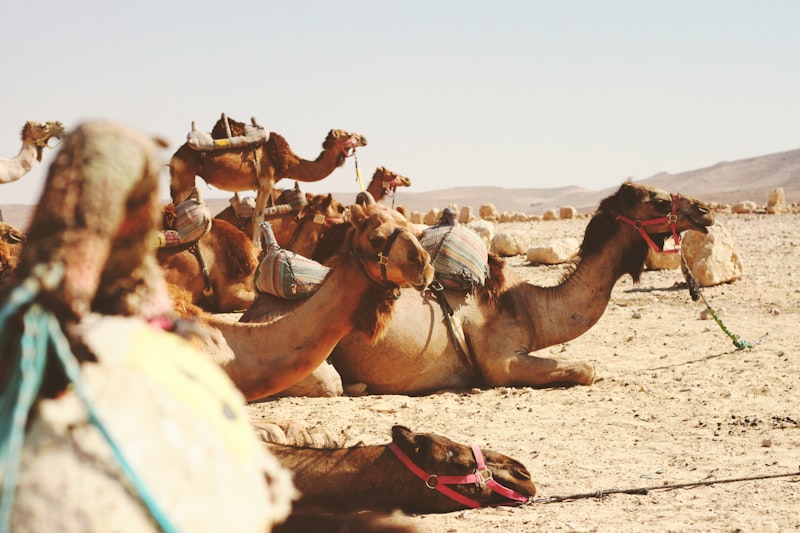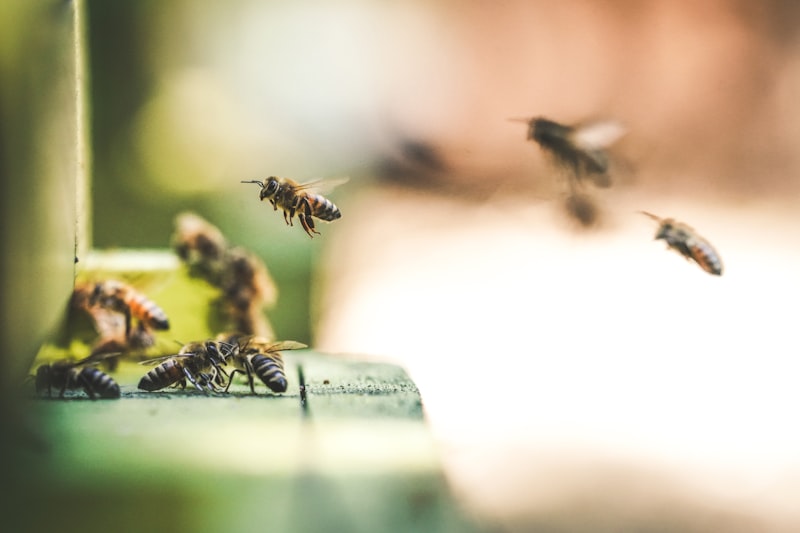Ever wondered how some animals defy all odds to survive? Nature often presents us with incredible tales of resilience and survival. Take the case of the axolotl, a unique amphibian native to Mexico. Known for its ability to regenerate lost limbs, the axolotl has fascinated scientists for years. This ability not only helps them recover from injuries but also aids in survival against predators in their habitat.
Another remarkable survivor is the tardigrade, often called the water bear. Despite its microscopic size, this creature boasts extraordinary resilience. Tardigrades can endure extreme conditions that would be fatal to most other life forms. They can survive freezing temperatures, intense radiation, and even the vacuum of space. This unparalleled survival skill has earned them a reputation as one of nature’s toughest creatures.
In the depths of the ocean, the dumbo octopus demonstrates remarkable adaptability. Named after the Disney character for its ear-like fins, this octopus lives thousands of feet below the surface, where pressures are crushing and temperatures near freezing. Despite these harsh conditions, it thrives by using its unique morphology to navigate and hunt in the abyss.
The camouflaged leaf-tailed gecko from Madagascar showcases nature’s creativity in survival tactics. With its body resembling a dead leaf, complete with veins and markings, this gecko blends seamlessly into its surroundings. This incredible camouflage not only helps it evade predators but also allows it to ambush unsuspecting prey with ease.
These animals are more than just survivors; they are marvels of evolution and adaptation. Their stories remind us of the astonishing diversity and resilience of life on Earth. Nature continues to surprise and inspire us with these incredible tales of survival against all odds.
Against All Odds: How These Animals Survived Near-Extinction
Imagine a world where some of the most iconic creatures teetered on the brink of disappearing forever. Against formidable odds, these resilient species not only survived but thrived, defying predictions of extinction.
Take the majestic Siberian tiger, once hunted to near extinction for its fur. Through concerted conservation efforts and protective measures, this elusive predator has made a remarkable comeback. Today, it roams the vast forests of Russia and parts of China, a symbol of resilience against human encroachment.
In the depths of the oceans, the humpback whale faced a similar plight. Hunted relentlessly for centuries, its haunting songs echoed through increasingly barren waters. Yet, global bans on whaling and marine conservation efforts have seen populations slowly rebound. These gentle giants now breach the waves, their recoveries echoing across the seas.
Closer to home, the bald eagle, America’s national emblem, faced a precarious future due to habitat loss and pesticide contamination. Thanks to protective measures under the Endangered Species Act and habitat restoration projects, these powerful raptors have soared back from the brink. Their piercing gaze and majestic flights remind us of nature’s enduring strength.
In Australia, the koala’s cuddly appearance belies its struggle against habitat destruction and climate change. Despite bushfires ravaging their eucalyptus homes, dedicated rescue and rehabilitation efforts have given these iconic marsupials a fighting chance. Their survival embodies hope amidst environmental challenges.
These stories of survival against all odds teach us profound lessons about resilience and conservation. By protecting habitats, enforcing bans on hunting, and promoting global awareness, we can ensure these animals continue to thrive for generations to come. Each success story is a testament to the power of human compassion and dedication to preserving our planet’s biodiversity.
From the Jaws of Danger: Incredible Tales of Animal Resilience
Take the story of the mighty Nile crocodile, a creature feared for its powerful jaws and predatory prowess. Despite its reputation as a fierce hunter, this ancient reptile faces its own battles for survival. During times of drought, when water levels plummet and prey becomes scarce, the Nile crocodile doesn’t give up. It adapts. By burying itself in mud and entering a state of dormancy, known as aestivation, it conserves energy until the rains return and its hunting grounds are replenished.
Meanwhile, high up in the Andes mountains, the chinchilla confronts the harsh realities of its habitat. With its soft, dense fur coveted by humans, this small rodent has been pushed to the brink of extinction. Yet, through conservation efforts and its own ability to reproduce rapidly, the chinchilla is slowly making a comeback. It’s a story of resilience against the odds, where even the smallest creatures can defy extinction.

In the African savannah, the African elephant faces relentless pressures from habitat loss and poaching. Yet, these majestic giants continue to roam the plains, their familial bonds and collective strength helping them navigate a changing landscape. Through protective conservation measures and global awareness, efforts are underway to safeguard their future.

From the depths of the Amazon rainforest to the icy expanses of Antarctica, animals confront challenges that test their limits. Each story of survival is a testament to their resilience and the interconnectedness of ecosystems worldwide. As we witness these incredible tales of animal resilience, we are reminded of the delicate balance between humanity and the natural world.
Unbelievable Survival: Animals that Defied Nature’s Challenges
Imagine the Arctic fox, a master of survival in one of the harshest environments on Earth. With its thick fur coat that changes color with the seasons, it seamlessly blends into the snowy landscape, evading predators while hunting small mammals beneath the frozen surface. Enduring temperatures that plummet far below freezing, this small predator thrives where few others can.
Then there’s the camel, known as the ship of the desert. With its ability to survive for weeks without water and withstand blistering heat that reaches over 100°F, the camel is a marvel of adaptation. Its hump stores fat, not water as commonly believed, providing energy when food and water are scarce. This adaptation allows it to traverse vast desert expanses in search of sustenance.
In the depths of the ocean, the anglerfish lurks, using a bioluminescent lure to attract prey in the dark abyss. Females possess a unique adaptation where they fuse with smaller males, becoming dependent on them for reproduction. This bizarre survival strategy ensures that even in the extreme pressures and darkness of the deep sea, these fish can perpetuate their species.
Moving to the Australian outback, the kangaroo rat exhibits extraordinary water conservation abilities. It can survive without ever drinking water, obtaining all its hydration needs from the seeds it consumes. In an environment where water is scarce and temperatures are extreme, this small rodent’s ability to thrive is nothing short of astonishing.
Lastly, consider the tardigrade, often dubbed the “water bear.” This microscopic creature can withstand extreme temperatures from near absolute zero to well above boiling point, intense pressures, radiation, and even the vacuum of space. Tardigrades achieve this remarkable feat by entering a state of cryptobiosis, essentially drying out their bodies until conditions improve.
These examples highlight just a fraction of the incredible adaptations and survival strategies found in the animal kingdom. Each species has its own unique story of resilience, demonstrating nature’s unparalleled ability to adapt and thrive in even the most challenging environments.
Survival Instincts: The Remarkable Stories of Resilient Wildlife
Another marvel of adaptation is the camel, known as the ship of the desert. With its ability to survive for weeks without water and endure extreme temperatures, the camel epitomizes resilience in harsh desert landscapes. Its hump stores fat, not water as commonly believed, providing a vital energy reserve during long journeys across arid terrains.
In the depths of the ocean, the anglerfish employs a unique survival strategy. Females possess a bioluminescent lure atop their heads to attract prey in the dark abyss. This adaptation allows them to thrive in the deep, where food is scarce and conditions are hostile.
On the savannahs of Africa, the acacia tree and the ants that inhabit it have formed a mutually beneficial alliance. The tree provides shelter and sustenance in the form of nectar, while the ants fiercely defend it against herbivores. This symbiotic relationship not only ensures the tree’s survival but also enhances its ability to thrive in a competitive ecosystem.
From the majestic polar bear navigating melting ice caps to the resilient cockroach surviving nuclear fallout, wildlife’s survival instincts offer profound insights into adaptation and perseverance. These remarkable stories remind us of nature’s boundless resilience and the awe-inspiring strategies animals employ to conquer adversity.
Struggle and Triumph: Inspiring Tales of Animals Beating the Odds
Take the story of the sea turtle, a creature bound by both land and sea. Nestled into the warm sands, hatchlings emerge and embark on a perilous journey towards the ocean. Battling predators and obstacles, only a fraction survive to adulthood. Yet, those that do navigate the treacherous waters, traveling vast distances with a singular purpose: to return to the very beach where they were born, completing a cycle of life against formidable odds.
Or consider the mighty eagle, whose breathtaking aerial displays belie the challenges it faces. Nesting atop towering cliffs, it raises its young amidst rugged terrain and harsh weather. The eagle’s keen eyesight and swift wings carry it across vast territories in search of prey, embodying perseverance in the hunt and adaptability in the ever-changing wilderness.
In the heart of Africa, the resilient elephant roams, a symbol of strength and familial bonds. Enduring droughts and human encroachment, these majestic creatures forge deep connections within their herds. Their survival hinges on collective wisdom and mutual aid, demonstrating that unity and resilience are essential tools in the struggle for existence.
These stories of animals overcoming adversity resonate deeply with us because they mirror our own human experiences. They teach us about courage in the face of adversity, determination in the pursuit of goals, and the enduring power of hope. As we witness their triumphs, we are reminded that resilience knows no bounds – it transcends species and speaks to the universal spirit of survival.
From the depths of the ocean to the heights of the sky, these tales of struggle and triumph inspire us to persevere in our own journeys, knowing that every obstacle is an opportunity for growth. In celebrating the victories of these remarkable creatures, we celebrate the resilience of life itself, finding solace and inspiration in their enduring spirit.
Nature’s Warriors: Animals That Overcame Unthinkable Challenges
In the vast tapestry of the natural world, resilience often takes center stage, embodied by creatures facing extraordinary challenges with astonishing determination. From the depths of oceans to the highest mountain peaks, animals have continually defied odds, showcasing feats of survival that leave us in awe.
Consider the story of the Arctic tern, a small bird with an incredible migratory journey spanning from the Arctic to Antarctica and back, covering over 70,000 kilometers annually. Enduring harsh weather conditions and predatory threats, these terns exemplify unwavering perseverance in their quest for survival and reproduction.
Another remarkable example is the gray whale, known for its epic migration along the Pacific coast, spanning from feeding grounds in the Arctic to breeding lagoons in Baja California. Despite facing historical threats from whaling and habitat degradation, populations have shown signs of recovery, demonstrating the power of conservation efforts and adaptation.
In the heart of Africa, the resilient elephant stands as a symbol of strength and familial bonds. Despite relentless poaching and habitat loss, these majestic creatures continue to navigate their landscapes, relying on intricate social structures to protect their young and sustain their herds.
Delving into the depths of the ocean, the leatherback sea turtle emerges as a testament to survival against environmental odds. These ancient mariners navigate vast expanses of ocean, overcoming obstacles such as pollution and climate change to nest on remote beaches where they themselves hatched decades earlier.
In each of these examples, nature’s warriors not only survive but thrive against daunting challenges. Their stories inspire us to recognize the interconnectedness of all life and the importance of conservation efforts to ensure future generations can witness these marvels of adaptation and resilience.
As we continue to explore and understand the natural world, let us celebrate these tales of survival and draw inspiration from the tenacity of nature’s warriors, reminding us of the beauty and fragility of our planet’s biodiversity.
Survival Against the Elements: Animals with Unstoppable Resilience
Nature’s tapestry weaves tales of astonishing resilience, where creatures defy the odds in the face of harsh environments. From the icy expanses of the Arctic to the scorching deserts of the Sahara, animals exhibit remarkable adaptability and tenacity.
Imagine the Arctic fox, a creature adapted to survive in one of Earth’s most extreme environments. Its thick fur coat provides insulation against sub-zero temperatures, allowing it to endure frigid Arctic winters with ease. With paws adapted to traverse icy terrain and a keen sense of smell to detect buried prey under layers of snow, the Arctic fox exemplifies resilience in the harshest of conditions.
In contrast, the camel thrives in the blistering heat of the desert. With its iconic hump storing fat reserves rather than water, the camel can survive for extended periods without drinking, crucial in arid landscapes where water sources are scarce. Its thick coat reflects sunlight and provides insulation, while specially adapted nostrils prevent sand from entering its airways during sandstorms. The camel’s ability to endure extreme heat and dehydration showcases nature’s ingenuity in equipping animals for survival.
Further south, the African elephant navigates the challenges of both drought and flood. Its massive size and strength enable it to reach high branches for nourishment during dry seasons, while its trunk acts as a versatile tool for gathering food and water. Despite weighing several tons, elephants can traverse miles in search of sustenance, demonstrating remarkable endurance in their quest for survival.
These examples highlight nature’s capacity to nurture resilience in diverse forms. Whether through physical adaptations, behavioral strategies, or innate abilities, animals embody the essence of adaptation and endurance in their struggle against the elements. Each species’ survival story adds a layer of awe to our understanding of the natural world, reminding us of the incredible resilience encoded in every living being.
Frequently Asked Questions
How do animals adapt to extreme environments to survive?
Learn how animals survive in extreme environments by adapting physical features, behaviors, and physiological processes to withstand harsh conditions such as extreme temperatures, lack of water, or high altitude.
Which animals have survived against formidable predators?
Discover which animals have successfully survived against formidable predators in this concise FAQ. Learn about the remarkable adaptations and behaviors that have enabled these species to thrive despite facing intense challenges from their natural predators.
What are some animals known for their incredible survival feats?
Discover fascinating animals celebrated for their extraordinary survival abilities. Learn about species like the tardigrade, renowned for surviving extreme conditions, and the axolotl, famous for regenerating lost body parts. Explore how camels endure harsh desert environments and how cockroaches adapt to various climates. These animals showcase remarkable resilience and adaptation strategies in diverse ecosystems.
What are some examples of animals that have survived natural disasters?
Discover examples of animals that have demonstrated remarkable survival abilities during natural disasters. Learn about species like the cockroach, which can withstand extreme conditions, or the axolotl, known for regenerating body parts. Explore how animals adapt and thrive in challenging environments.
How do animals demonstrate resilience in challenging situations?
Learn how animals exhibit resilience in difficult circumstances, showcasing their ability to adapt, recover, and thrive despite adversities.


